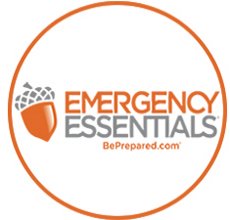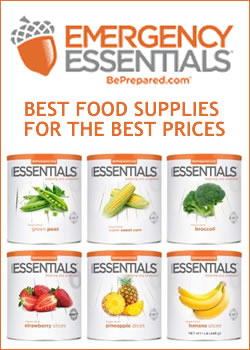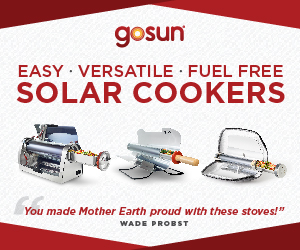
How Much Food Storage
Do I Need?
You know you need more food storage but you still have that worrisome question: What do I need and how much food is enough?
The following chart will help you determine how much you will need.
Invest in emergency food storage now and enjoy peace of mind for the next 25 years. Don't miss out on the savings!
Suggested Amounts of Basic Storage Foods
The amounts in the chart below are for one person for one year. If you don't want to do the math for the number of people in your family, use our Food Storage Calculator.
Item |
Per Year Amount |
Links to More Information |
Grains |
400 lbs. |
Storing Grains |
|
175 lbs. | |
|
20 lbs. | |
|
30 lbs. | |
|
50 lbs. | |
|
80 lbs. | |
|
5 lbs. | |
|
40 lbs. | |
| Legumes | 60 lbs. | Storing Legumes |
|
45 lbs. | |
|
2 lbs. | |
|
2 lbs. | |
|
2 lbs. | |
|
2 lbs. | |
|
7 lbs. | |
| Fats and Oils | 10 quarts | Storing Fats & Oils |
|
5 quarts | |
|
2 quarts | |
|
1 quart | |
|
1 quart | |
| Milk Group | 16 lbs (or equivalent in canned milk) | Storing Powdered Milk |
|
14 lbs. | |
|
12/12 oz. cans | |
| Sugars | 60 lbs. | Storing Sugars |
|
40 lbs. | |
|
3 lbs. | |
|
1 lbs. | |
|
3 lbs. | |
|
3 lbs. | |
|
5 lbs. | |
|
5 lbs. | |
|
1 lbs. | |
| Miscellaneous | ||
|
8 lbs. | |
|
1/2 lbs. | |
|
1 lbs. | |
|
1 lbs. | |
|
14 gallons* | How to Store Water |
* Obviously, this would provide drinking and cooking water for only a few days - less than a week. Much more water needs to be stored, if possible. Fruits and vegetables in any form would enhance the nutritional value of this diet. |
||
Bare-Bones Basics
Bare-bones basics have two strong appeals when you look at them strictly from a preparedness perspective: (1) these foods will sustain life if they're all you have to eat, and (2) they have a long shelf life, so if you aren't willing or able to work them into your regular diet, you can still store them for a future time of need and they'll wait for you without constant care.
A supply of bare-bones basic foods is a good place to start your home food storage program, but be sure to add some variety too.














